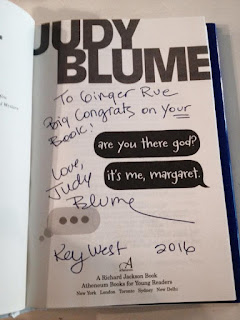Posts
Showing posts from November, 2020

Posted by
Author on the Loose
...Thank you, Maureen Daly....
- Get link
- X
- Other Apps

Posted by
Ginger Rue
"She Talks to Us Just Like We're Real People"
- Get link
- X
- Other Apps
Posted by
Holly Schindler
Grateful for Judy Blume (Schindler)
- Get link
- X
- Other Apps
Posted by
Dia Calhoun
Reimagine the Holidays: Smack Dab in the Imagination by Dia Calhoun
- Get link
- X
- Other Apps

Posted by
Nancy J Cavanaugh
Thankful for These Authors
- Get link
- X
- Other Apps

Posted by
Bobbi Miller
Do or Do Not: It's Okay
- Get link
- X
- Other Apps
Gratitude and My Grandma -- by Jennifer Mitchell
- Get link
- X
- Other Apps

Posted by
darlenebeckjacobson
Practicing Gratitude by Darlene Beck Jacobson
- Get link
- X
- Other Apps

Posted by
Jody Feldman
Don't Make Me Choose!
- Get link
- X
- Other Apps

Posted by
Jane Kelley
GRATEFUL TO E. NESBIT -- by Jane Kelley
- Get link
- X
- Other Apps

Posted by
Holly Schindler
Interview with New Smack Dab Blogger Deborah Kalb (Author of Thomas Jefferson and the Return of the Magic Hat) - Holly Schindler
- Get link
- X
- Other Apps
